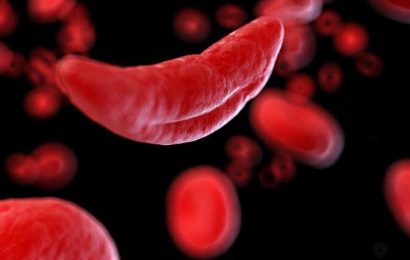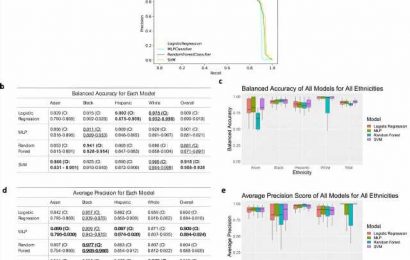Keeping the Shape of Proteins
Proteins are made of amino acid chains, or polypeptides. Amino acids have a basic backbone made of an amino group and a carboxyl group, and differ in their side-chains. These polypeptide chains of amino acids can be shaped as helixes or sheets, which come together to form a 3D structure. The 3D structure of proteins is referred to as its “tertiary structure”.
The process of folding proteins into their tertiary structures is spontaneous and involves bonds and intermolecular forces to make the structure stable, which are described below.
Disulfide Bonds
Disulfide bonds are formed between two sulfur (SH) atoms, which are found in the side-chain of the amino acid cysteine. When two cysteines are brought into close proximity in the tertiary structure, an enzyme called “protein disulfide isomerase” forms a disulfide bond between the two SH groups. Due to the nature of the disulfide bond, it can be considered to be part of the primary structure of proteins, i.e. the polypeptide.
Electrostatic Bonds and Van der Waals Forces
Some amino acids have a charged side-chain, which is either negative or positive. Negatively charged side-chains are attracted to positively charged side-chains, while being repelled by another negatively charged side-chains. When two opposite charged chains come together, they form what is called a “salt bridge”.
Van der Waals forces are also similar to electrostatic bonds. The formation of Van der Waals forces depends on the shape of the side-chain; if the atoms within the side-chains of neighboring amino acids fit well, then Van der Waals force is formed.
Hydrogen Bonds
Hydrogen bonds form between two atoms and a hydrogen atom. Atoms, such as oxygen, can be covalently bound to hydrogen, and giving the hydrogen (H) in the OH group a slight positive charge due to the oxygen (O) attracting electrons. When this OH group comes across another atom with a slightly negative charge, such as oxygen, the hydrogen from the OH group reaches out to the oxygen atom and forms a bond. This is known as a hydrogen bond, and occurs between amino acids which have what is called a polar side-chain.
Hydrophobic Interactions
Some amino acids have side-chains which repel water, or are hydrophobic. These amino acids with hydrophobic side-chains are often found on the inside of proteins, and due to the hydrophobic nature of these amino acids they interact with one another by what is called hydrophobic “interactions”.
How is the Tertiary Structure of Proteins Formed?
The tertiary structure of proteins is such that it is suited to the function of the protein. Proteins function in different environments, and thus each protein has different requirements.
For example, if a protein works in a water-based environment, then it is not appropriate to have hydrophobic amino acids in the section of the protein which is in contact with the water. To avoid this, hydrophobic amino acids are tucked away inside of the protein. So here, hydrophobic interactions would be keeping these hydrophobic amino acids together, while the “water-liking” (hydrophilic) amino acids on the outside of the proteins will form hydrogen bonds with the water.
The cell membrane is a hydrophobic environment, so the parts of proteins which will be within the cell membrane is usually made up of hydrophobic amino acids. These proteins can also have regions which poke out of the membrane, and these outer regions are usually made up of hydrophilic amino acids.
The protein α-keratin is found in hair, skin and nails. The polypeptides which make up α-keratin is shaped as a helix, and four of these coil together to form a protofibril. The protofibrils then become coiled into larger microfibrils, which are coiled again to form macrofibrils. In the microfibrils, disulfide bonds can be formed, and the number of disulfide bonds changes the hardness of α-keratin; there are more disulfide bonds in the α-keratin found in nails, compared to the α-keratin found in skin and hair. This ensures that the nails are tough, while skin and hair are given enough structure while maintaining more movement.
Sources
- Tertiary structure, an overview; Science Direct – www.sciencedirect.com/…/tertiary-structure
- Amino acids; Encyclopaedia Britannica – https://www.britannica.com/science/amino-acid
- Disulfide bond – http://academic.brooklyn.cuny.edu/biology/bio4fv/page/disulfi.htm
- Hydrogen bonding; Encyclopaedia Britannica – https://www.britannica.com/science/hydrogen-bonding
- Folding to Function; Nature Structural and Molecular Biology – https://www.nature.com/articles/nsmb0609-573
Further Reading
- All Protein Content
- Protein Production: Initiation, Elongation and Termination
- Protein Folding
- Amino Acids and Protein Sequences
- Protein Complex Analysis
Last Updated: Jan 25, 2019

Written by
Dr. Maho Yokoyama
Dr. Maho Yokoyama is a researcher and science writer. She was awarded her Ph.D. from the University of Bath, UK, following a thesis in the field of Microbiology, where she applied functional genomics toStaphylococcus aureus . During her doctoral studies, Maho collaborated with other academics on several papers and even published some of her own work in peer-reviewed scientific journals. She also presented her work at academic conferences around the world.
Source: Read Full Article


